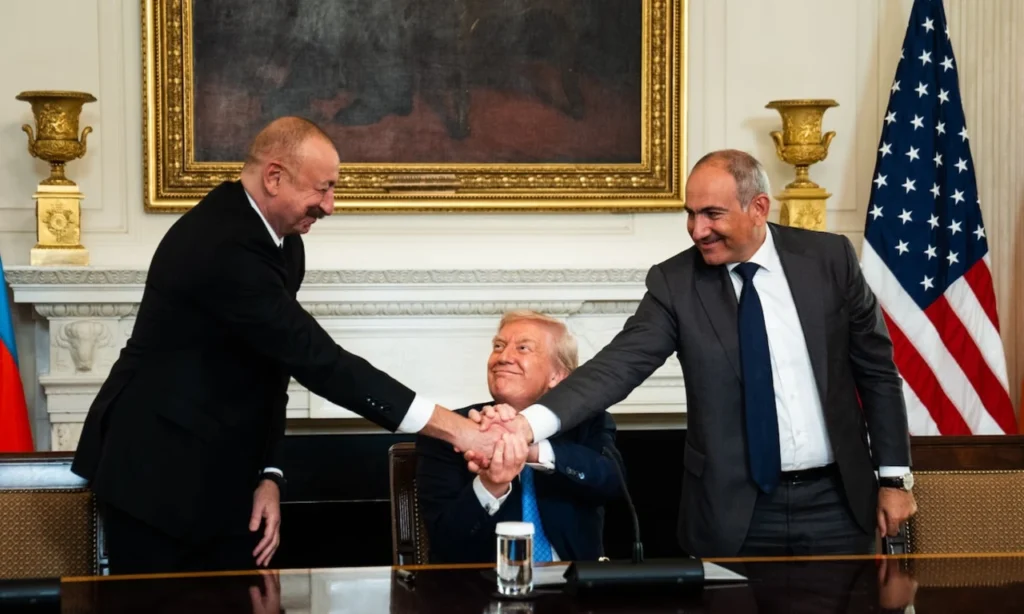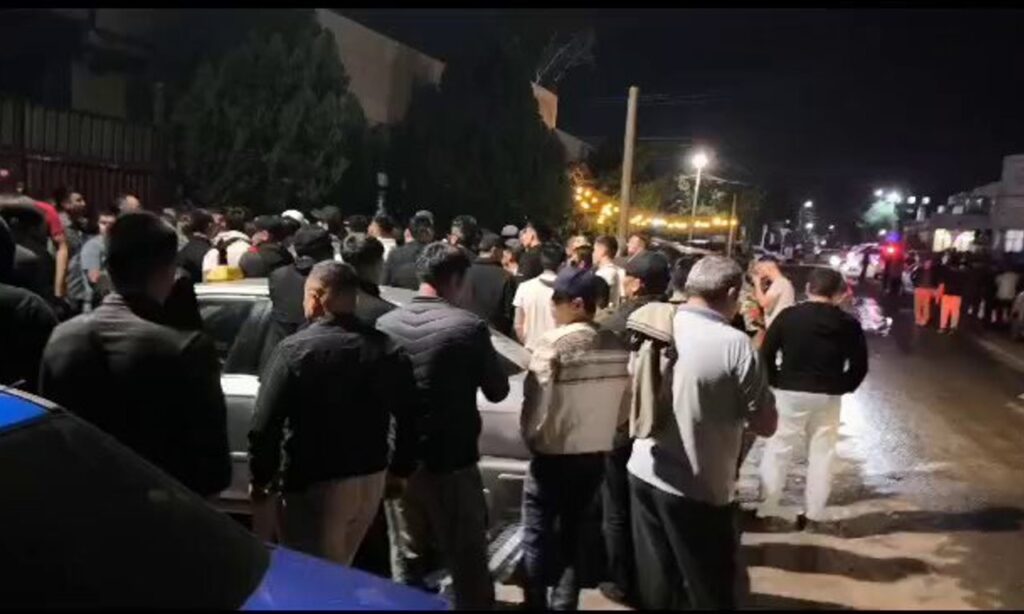Washington, D.C. – In a groundbreaking diplomatic move, Trump Brokers Historic Armenia–Azerbaijan Peace Deal at White House on August 8, 2025, ending decades of hostility between the two nations. The agreement, signed by Armenian Prime Minister Nikol Pashinyan and Azerbaijani President Ilham Aliyev, took place in the East Room of the White House, with U.S. President Donald Trump personally overseeing the talks.
Decades of Conflict End With Armenia–Azerbaijan Peace Agreement
For nearly forty years, Armenia and Azerbaijan have been locked in a bitter dispute over Nagorno-Karabakh, a mountainous region internationally recognized as part of Azerbaijan but largely populated by ethnic Armenians. The conflict caused repeated wars, border skirmishes, and thousands of civilian casualties.
The new peace agreement, finalized in Washington, marks the most significant breakthrough in the region since the collapse of the Soviet Union. According to Fox News, the deal includes a permanent ceasefire, recognition of borders, and the creation of a strategic transit corridor linking Azerbaijan’s mainland with its Nakhchivan exclave through Armenia’s Zangezur region.
Key Details of the Trump-Mediated Armenia–Azerbaijan Peace Deal
- Permanent Ceasefire – Both countries agreed to halt all military actions and resolve disputes through diplomacy.
- Border Recognition – Armenia formally recognizes Azerbaijan’s territorial integrity, including Nagorno-Karabakh, while Azerbaijan commits to safeguarding ethnic Armenian rights in the region.
- Strategic Transit Corridor – Named the Trump Route for International Peace and Prosperity (TRIPP), the corridor will allow direct trade and travel between Azerbaijan and Turkey via Armenia. The U.S. has secured a 99-year lease to operate and develop this route.
- Economic Cooperation – Separate bilateral agreements between the U.S. and both nations will promote investment, technology exchange, and energy partnerships.
According to Reuters, the deal was reached after days of intense negotiations in Washington, with Trump personally meeting both leaders multiple times to resolve final sticking points.
Trump’s Role in the Armenia–Azerbaijan Peace Talks
President Trump positioned himself as the primary mediator, stepping in where previous international efforts failed. Past negotiations by the OSCE Minsk Group had stalled for years, with no permanent solution in sight.
At the White House signing ceremony, Trump called the agreement “a victory for peace, prosperity, and stability in the Caucasus,” adding that “the United States will stand as a friend and partner to both Armenia and Azerbaijan.”
Fox News confirmed that Trump’s diplomatic approach included direct talks, economic incentives, and security guarantees. His strategy avoided lengthy bureaucratic processes and instead focused on face-to-face commitments.
Global Reactions to the Armenia–Azerbaijan Peace Deal
The peace deal has drawn mixed reactions worldwide. Many nations welcomed the breakthrough. Turkey’s President Recep Tayyip Erdoğan praised the agreement, calling it “a bold and historic step for regional stability.”
Meanwhile, Russia expressed cautious approval, noting that it would monitor implementation closely. The European Union also issued a statement supporting the deal, urging all parties to remain committed to the terms.
However, some Armenian opposition leaders criticized parts of the agreement, particularly the recognition of Azerbaijan’s sovereignty over Nagorno-Karabakh. Analysts told CNN that although the compromise was difficult, it may be the only path toward long-term peace.
Impact of the Peace Agreement on the Region
Experts believe the Trump-brokered Armenia–Azerbaijan Peace Deal could reshape the economic and political landscape of the South Caucasus. The TRIPP corridor is expected to become a major trade route linking Europe and Asia, reducing transportation costs and boosting commerce.
Energy analysts have also noted that the peace agreement could open new opportunities for oil and gas projects, allowing Azerbaijan to expand exports and Armenia to access new energy markets.
Political observers say this agreement enhances U.S. influence in the region, countering Russia’s traditional dominance. The long-term success, however, will depend on how both nations honor their commitments and handle internal political pressures.
What Happens Next?
The U.S. State Department will work with both governments to oversee the implementation of the peace deal. Construction of the TRIPP corridor is scheduled to begin in early 2026, with American companies playing a major role in infrastructure development.
Humanitarian organizations have already announced plans to assist displaced families returning to their homes under the new arrangements.
Conclusion
The signing of this historic peace agreement has closed one of the most prolonged and deadly disputes in the post-Soviet space. While challenges remain, the commitment shown by both Armenia and Azerbaijan—and the personal involvement of President Trump—marks a turning point in the region’s history.
With the eyes of the world on the Caucasus, the hope is that this accord will serve as a model for future conflict resolution. As President Trump declared at the closing of the White House ceremony, Trump Brokers Historic Armenia–Azerbaijan Peace Deal at White House is not just a headline—it is the beginning of a new chapter for peace.




